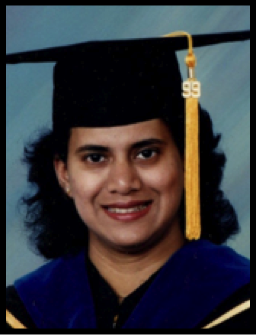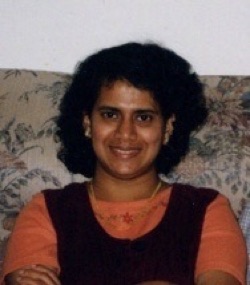Dr. Neeta Thakur (née Naik)
Thesis abstract:
An elegant approach to stereoselective radical reactions is one in which a prochiral radical reacts with a noncovalently bonded optically active reagent to form a new stereogenic center selectively. The major question in free radical chemistry that has been investigated is whether a chiral reagent can differentiate between the two faces of a prochiral carbon radical. The work carried out in this thesis shows that such control of stereochemistry is indeed possible.
The first part of Chapter 1 presents selected examples of chemoselective, regioselective, and stereoselective radical reactions from the literature. The second part of Chapter 1 discusses the known applications of a special class of stable free radicals: optically active nitroxides. These applications include their use as oxidation reagents, anticancer agents, and spin labels.
The use of a chiral C2-symmetric nitroxide, trans-2,5-dimethyl-2,5-diphenylpyrrolidine-1-oxyl (DPPO), in stereoselective C-O bond formation via coupling with prochiral carbon radicals is described in Chapter 2. Three different methods are used for the generation of prochiral carbon radicals: oxidation of carbanions with CuCl2, oxidation of alkylhydrazines with PbO2, and addition of a manganese(salen) complex to styrenes. A variety of substrates are studied using these methods in order to analyze the steric and electronic effects on the stereoselectivity. In addition, the effects of other factors such as solvent polarity, solvent viscosity, and temperature on the selectivity are analyzed. Conformational rigidity plays a dominating role in the stereoselectivity.
ESR studies are carried out to estimate the approximate temperature at which the coupling occurs. These are discussed in Chapter 3 along with the dynamic NMR spectra of the N-alkoxyamines. The application of these N-alkoxyamines in living free radical polymerization and various attempts to cleave the N-O bond in the N-alkoxyamines are also summarized.
Chapter 4 describes the work on asymmetric catalysis using hydroxamic acids. The product of an unexpected rearrangement and its derivatives are used as multidentate ligands in diethylzinc addition to benzaldehyde, borane reduction of acetophenone, and asymmetric protonation of a dioxolanone.
Ph.D. 1999: Stereoselective coupling of chiral nitroxides with prochiral carbon radicals
1994: UC Regents Fellowship
M.S.: Organic Chemistry, University of Bombay
B.S.: Chemistry, University of Bombay
Intrabiotics: Research Scientist in Medicinal Chemistry
Foley & Lardner LLP: Patent Agent, Law Clerk
Swiss Tanner: Patent Agent, Law Clerk
J.D. 2013: Santa Clara University School of Law
Netta is now Senior Corporate Counsel, Intellectual Property
Publications with the Braslau Group:
R. Braslau,* N. Naik, H. Zipse, "Studies on the Stereoselective Coupling of Prochiral Radicals with a Chiral C-2 Symmetric Nitroxide, " J. Am. Chem. Soc., 2000, 122, 8421-8434. http://tinyurl.com/d9dmjn
N. Naik, R. Braslau,* "Synthesis and Applications of Optically Active Nitroxides," Tetrahedron Reports, 1998, 54, 667-696. http://tinyurl.com/c6l7ba
R. Braslau,* L. C. Burrill II, M. Siano, N. Naik, R. K. Howden and L. K. Mahal, "Low Temperature Preparations of Unimolecular Nitroxide Initiators for "Living" Free Radical Polymerizations," Macromolecules, 1997, 30, 6445-6450.
R. Braslau,* N. Naik and M. Olmstead, “Unexpected Rearrangement of a Borneol-derived O-Benzylated Hydroxamic Acid: Facile Synthesis of an Optically Active Multidentate Ligand,” J. Org. Chem.,1996,61, 368-371.




